ZIF Retainer Technical Resources
Expertise in Ruggedized Mechanical Hardware
ETS Alliance’s product line includes:
- Wedge-lock style PCB Card Guides for VME, VPX, and custom cards
- Rugged mechanical card guides for high-vibration environments
- Mounting hardware compatible with tight enclosures and modular platforms
- Designs supporting passive and active cooling for thermal management
These components are tested and proven in airborne avionics, mobile ground systems, and industrial automation—where durability is non-negotiable.
ETS Alliance: Engineered PCB Card Guides for Aerospace and Mission-Critical Systems
In aerospace, military, and industrial applications, even the smallest hardware component can become a single point of failure. That’s why organizations seeking ruggedized circuit board retention solutions turn to ETS Alliance—a trusted name in precision-engineered hardware.
ATR computing and avionics enclosures need to be designed to withstand the harsh conditions faced by military aircraft and vehicles. They are typically constructed from robust and lightweight materials such as aluminium, stainless steel and composites, and ruggedized against environmental factors such as shock, vibration, moisture and dust ingress, electromagnetic interference (EMI), extremes of temperature, and changes in pressure due to altitude.

VPX HAS A HEAT DISSIPATION PROBLEM
Instead of using the board edges to conduct heat, why not use the entire board?
In a recent post, Embedded Board Standards Are No Longer “Standard” – So Why Aren’t You Looking for Better Alternatives? we talked about the problems related to VPX as a “standard.” It’s clear that it’s become more accurately an “open specification,” which means it’s lost any advantage in terms of interoperability or modularity.
But VPX as a design choice has more issues than that. Let’s look specifically at its heat problem.
VPX Wedge Locks Are A Heat Bottleneck
The majority of the VPX boards that are sold go into conduction-cooled systems. In this scenario, you have to take the heat from the entire board, a 6U card. For the sake of argument, let’s say that it’s 150W that needs to be dissipated. It may be higher than that, but it’ll serve well for this discussion.
You have to take that 150W of heat across the board’s surface to the ejectors (the fasteners that lock the board in place), also known as the wedge lock. The wedge lock then transfers the heat to the chassis to cool it. This is where the real problem is. The surface area of the wedge lock that can actually conduct that heat is very limited. Consequently, it can’t transfer enough surface-area heat from the cold plate out to the wedge lock and from the wedge lock to the ATR box.
This clearly wasn’t a problem back at the origin of VPX, because the higher-power boards were only dissipating 30 or 40W. Now, because everything is so highly integrated and processors consume so much power, 150W solutions are common. Heck, the Xeon processor alone could consume 85 to 120W. Also, bear in mind that older systems placed each function on a different card. Today, it’s the norm for a motherboard to hold the CPU, memory, graphics, communications, I/O, and so on.

We came up with a way to integrate that board into a box that sits on the base of the chassis, as shown in Figure 3. As a result, the board’s entire surface gets conducted directly through its bottom. Think of it as a 100% heat pipe going directly from the processor to the box’s aluminum frame, and NOT through a thin little wedge lock.
Clearly, the advantage of this technique is that there’s more surface area to use for cooling, and when you do cool it, you cool the frame. You transfer all the heat directly to the frame of the vehicle or aircraft (and not heat/cool the cabin).
ZIF Rod Displacement Curve Torque Specification

ZIF III Advantages over Wedge Style Board Retainers
Introduction
The advantages that ZIF III board retainers provide over wedge style retainers provide system integrators
the opportunities for better heat management and simplified board loading.
Description
The ZIF III retainer is designed to mount to the PC board with the board in contact along the full length of
the retainer. The board and retainer assembly is securely locked into a cold-wall with a simple quarter turn. There are no torque wrenches or settings needed with the ZIF III.
The unique locking design of the ZIF III produces a uniform pressure distribution along the PCB edge and
once the assembly is mounted into the cold plate, provides improved heat transfer and resistance to
extreme shock and vibration. Both braze and screw mounting of the ZIF III is available and both provide
uniform mounting pressure to the PCB with no board warping.

Figure 1. ZIF III retainer both mounted and un-mounted on PCB.
The quarter-turn lock and unlock allow quick loading and unloading of boards. The slot in the hex-head
rod is colored to provide visual indication of the lock-status of the retainer.

Figure 2. Typical ZIF III assembly and cold plate mounting arrangement.
ETS Electronic Components Page 1 9/28/2006 ZIF III Advantages over Wedge Style Board Retainers AN1017
Figure 3 demonstrates how force is evenly distributed along the length of the ZIF III retainer and PCB
rather than concentrated into narrow bands, as shown in the wedge retainer. The even pressure and
uniform contact maximize force and heat transfer on both sides of the cold wall, as shown by the arrows.
By design, the wedge style retainers have the potential to create air gaps and hot spots.


ETS Electronic Components Page 2 9/28/2006
ZIF III Advantages over Wedge Style Board Retainers AN1017
Conclusion
ZIFIII retainers provide a simplistic quarter-turn lock and uniform clamping pressure. These and other features should be considered for all mission-critical applications.
Referenced Documents
ZIF III retainers are tested per:
MIL-STD-810
MIL-E-16400
MIL-S-901
Complete Details on ZIF III and other ZIF products can be located at:
Written by: Damon Niswonger
Date: 9/28/200
ETS Electronic Components Page 3 9/28/2006
ZIF III Advantages over Wedge Style Board Retainers AN1017
Ruggedized ATR Military Chassis and ZIF III Board Retainers
Air Transport Rack (ATR) military enclosures serve a critical role in safeguarding vital systems across a diverse array of military applications. From fighter jets and transport aircraft to nuclear submarines and advanced battle tanks, these enclosures—available in 1/2 ATR, 3/4 ATR, and Full ATR sizes—are tailored to meet stringent reliability requirements.
ZIF III Advantages over Wedge Style Board Retainers
Introduction
The advantages that ZIF III board retainers provide over wedge style retainers provide system integrators
the opportunities for better heat management and simplified board loading.
Description
The ZIF III retainer is designed to mount to the PC board with the board in contact along the full length of
the retainer. The board and retainer assembly is securely locked into a cold-wall with a simple quarter turn. There are no torque wrenches or settings needed with the ZIF III.
The unique locking design of the ZIF III produces a uniform pressure distribution along the PCB edge and
once the assembly is mounted into the cold plate, provides improved heat transfer and resistance to
extreme shock and vibration. Both braze and screw mounting of the ZIF III is available and both provide
uniform mounting pressure to the PCB with no board warping.

Figure 1. ZIF III retainer both mounted and un-mounted on PCB.
The quarter-turn lock and unlock allow quick loading and unloading of boards. The slot in the hex-head
rod is colored to provide visual indication of the lock-status of the retainer.

Figure 2. Typical ZIF III assembly and cold plate mounting arrangement.
ETS Electronic Components Page 1 9/28/2006 ZIF III Advantages over Wedge Style Board Retainers AN1017
Figure 3 demonstrates how force is evenly distributed along the length of the ZIF III retainer and PCB
rather than concentrated into narrow bands, as shown in the wedge retainer. The even pressure and
uniform contact maximize force and heat transfer on both sides of the cold wall, as shown by the arrows.
By design, the wedge style retainers have the potential to create air gaps and hot spots.


ETS Electronic Components Page 2 9/28/2006
ZIF III Advantages over Wedge Style Board Retainers AN1017
Conclusion
ZIFIII retainers provide a simplistic quarter-turn lock and uniform clamping pressure. These and other features should be considered for all mission-critical applications.
Referenced Documents
ZIF III retainers are tested per:
MIL-STD-810
MIL-E-16400
MIL-S-901
Complete Details on ZIF III and other ZIF products can be located at:
Written by: Damon Niswonger
Date: 9/28/200
ETS Electronic Components Page 3 9/28/2006
ZIF III Advantages over Wedge Style Board Retainers AN1017
Ruggedized ATR Military Chassis and ZIF III Board Retainers
Air Transport Rack (ATR) military enclosures serve a critical role in safeguarding vital systems across a diverse array of military applications. From fighter jets and transport aircraft to nuclear submarines and advanced battle tanks, these enclosures—available in 1/2 ATR, 3/4 ATR, and Full ATR sizes—are tailored to meet stringent reliability requirements.
ZIF III Advantages over Wedge Style Board Retainers
Introduction
The advantages that ZIF III board retainers provide over wedge style retainers provide system integrators
the opportunities for better heat management and simplified board loading.
Description
The ZIF III retainer is designed to mount to the PC board with the board in contact along the full length of
the retainer. The board and retainer assembly is securely locked into a cold-wall with a simple quarter turn. There are no torque wrenches or settings needed with the ZIF III.
The unique locking design of the ZIF III produces a uniform pressure distribution along the PCB edge and
once the assembly is mounted into the cold plate, provides improved heat transfer and resistance to
extreme shock and vibration. Both braze and screw mounting of the ZIF III is available and both provide
uniform mounting pressure to the PCB with no board warping.

Figure 1. ZIF III retainer both mounted and un-mounted on PCB.
The quarter-turn lock and unlock allow quick loading and unloading of boards. The slot in the hex-head
rod is colored to provide visual indication of the lock-status of the retainer.

Figure 2. Typical ZIF III assembly and cold plate mounting arrangement.
ETS Electronic Components Page 1 9/28/2006 ZIF III Advantages over Wedge Style Board Retainers AN1017
Figure 3 demonstrates how force is evenly distributed along the length of the ZIF III retainer and PCB
rather than concentrated into narrow bands, as shown in the wedge retainer. The even pressure and
uniform contact maximize force and heat transfer on both sides of the cold wall, as shown by the arrows.
By design, the wedge style retainers have the potential to create air gaps and hot spots.


ETS Electronic Components Page 2 9/28/2006
ZIF III Advantages over Wedge Style Board Retainers AN1017
Conclusion
ZIFIII retainers provide a simplistic quarter-turn lock and uniform clamping pressure. These and other features should be considered for all mission-critical applications.
Referenced Documents
ZIF III retainers are tested per:
MIL-STD-810
MIL-E-16400
MIL-S-901
Complete Details on ZIF III and other ZIF products can be located at:
Written by: Damon Niswonger
Date: 9/28/200
ETS Electronic Components Page 3 9/28/2006
ZIF III Advantages over Wedge Style Board Retainers AN1017
Ruggedized ATR Military Chassis and ZIF III Board Retainers
Air Transport Rack (ATR) military enclosures serve a critical role in safeguarding vital systems across a diverse array of military applications. From fighter jets and transport aircraft to nuclear submarines and advanced battle tanks, these enclosures—available in 1/2 ATR, 3/4 ATR, and Full ATR sizes—are tailored to meet stringent reliability requirements.
Versatile Applications
ATR enclosures are meticulously configured to suit specific applications, systems, and vehicles, ensuring optimal performance under harsh environmental conditions. They are indispensable in environments where reliability is paramount, including simulators, ground test systems, and various military vehicles.
Protective Design
Designed to shield internal VMEbus boards and backplanes, ATR chassis are engineered to withstand extreme conditions such as intense vibrations and varying temperatures. They adhere to stringent EMI/EMC standards, offering robust protection against electromagnetic interference and noise, essential for mission-critical operations.
Complex Thermal Management
One of the foremost challenges in ATR enclosure design is thermal management. Given the high power consumption of multiple circuit boards within the chassis, effective cooling solutions are imperative. The design often incorporates sophisticated cooling mechanisms to regulate temperatures and maintain optimal operational conditions.
ZIF III Board Retainers
Central to efficient thermal management is the ZIF III board retainer. Renowned for its innovative design, including zero insertion force and a quarter-turn lock/unlock mechanism, it ensures uniform clamping pressure across the chassis sidewall. This feature maximizes thermal conductivity, crucial for the close VMEbus board spacing typical in ATR enclosures (0.8″ pitch). With an impressively low thermal resistance of 1.2°C-In/W, the ZIF III retainer facilitates superior heat dissipation to the cold plate, enhancing overall system reliability
Conclusion
In conclusion, ATR military enclosures and the advanced ZIF III board retainers play pivotal roles in protecting and optimizing the performance of critical military systems. By addressing challenges such as thermal management and electromagnetic compatibility, these ruggedized solutions uphold the stringent requirements of modern military applications. Their reliability and adaptability make them indispensable components across various defense platforms, ensuring
operational effectiveness in even the most demanding environments. For more information on ATR military chassis and ZIF III board retainers, visit ; https://www.etsalliance.com
ZIF III Board Retainer Features
| Parameter | Features |
|---|---|
| Insertion and Extraction | Zero insertion force |
| Cold Plate | Excellent heat transfer |
| Clamping Pressure | Uniform pressure along the PCB edge |
| Locking/Unlocking | 1/4 turn lock/unlock |
| Operation Repeatability | Consistent and easy to operate |
| Over-torque Sensitivity | Not susceptible to over-torque |
| PC board operational damage | Does not damage PC boards |
| Retainer Mounting Options | Screw mounting |
| Thermal Performance | 12°C-inch/Watt |
ZIF III Board Retainer Common Sizes
| VMEbus Card Size | ZIF III Retainer Size | CTS Standard Part No. |
|---|---|---|
| 9U Size D | 12" (2 Required) | Z3A12SBSBNL/R |
| 6U Size C | 12" (2 Required) | Z3A12SBSBNU/R |
| 6U Size B | 6" (2 Required) | Z3A60SBSBNU/R |
ZIF III Thermal Resistance
| Thermal Resistance (°C/W/IN) | 10 Watts | 25 Watts | 50 Watts |
|---|---|---|---|
| 1" Length | 1.17 | 0.84 | 0.69 |
| 2" Length | 1.17 | 0.97 | 0.89 |
| 6" Length | 1.16 | 0.93 | 0.84 |
Environmental Qualification Tests
Qualified to MIL-Std-810:
High Temperature: Method 501, 71°C, after 48 hours exposure to 150°C.
Low Temperature: Method 502, -55°C.
Vibration: Method 514, Category B.1, 5Hz to 2 KHz.
Salt Fog: Method 509.
Shock: Method 516.
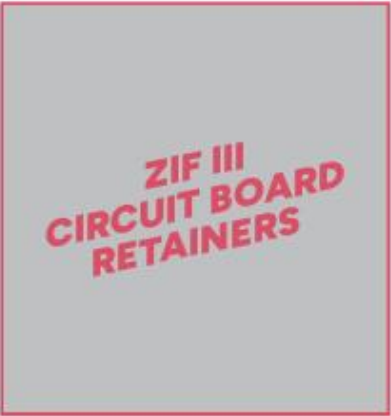
Ruggedized ATR Military Chassis and ZIF III Board Retainers
Air Transport Rack (ATR) military enclosures serve a critical role in safeguarding vital systems across a diverse array of military applications. From fighter jets and transport aircraft to nuclear submarines and advanced battle tanks, these enclosures—available in 1/2 ATR, 3/4 ATR, and Full ATR sizes—are tailored to meet stringent reliability requirements.
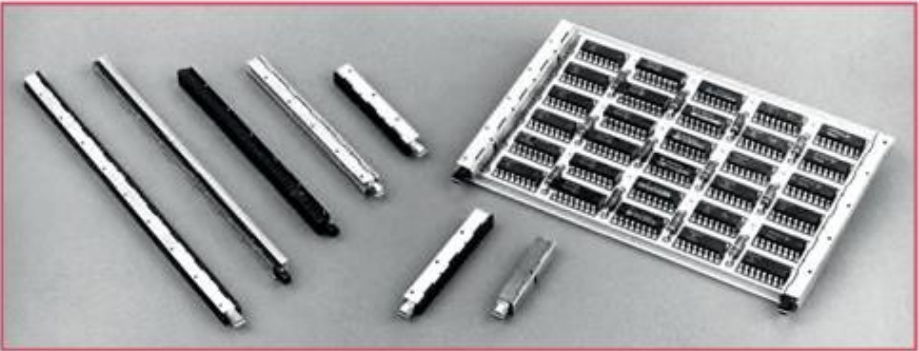
DESIGN FEATURE
PC Board Mountable
Positive 1/4 Turn Locking
Field Maintainable
Quick And Easy Installation
Superior Mechanical Retention
Thermally Efficient, 0.9°C-inch/watt
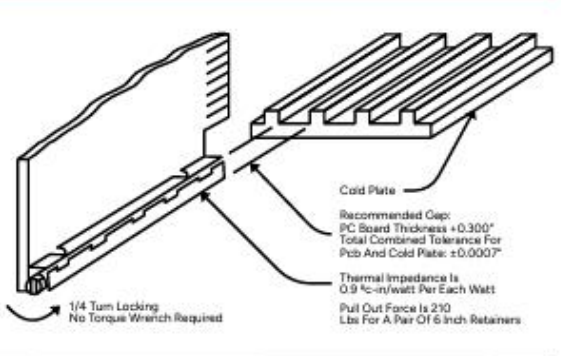
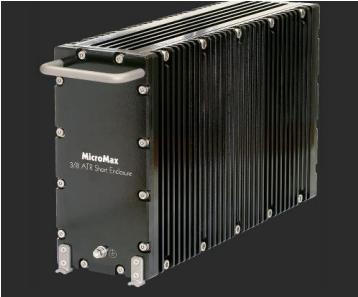
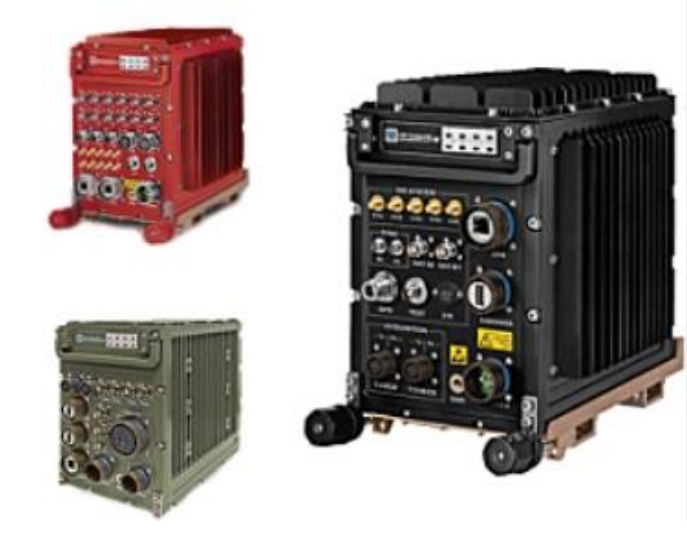
Ruggedized ATR Chassis
ATR computing and avionics enclosures need to be designed to withstand the harsh conditions faced by military aircraft and vehicles. They are typically constructed from robust and lightweight materials such as aluminium, stainless steel and composites, and ruggedized against environmental factors such as shock, vibration, moisture and dust ingress, electromagnetic interference (EMI), extremes of temperature, and changes in pressure due to altitude.
Built for Environments Where Failure Isn’t an Option
Printed circuit boards used in mission-critical environments—such as aircraft, defense systems, and industrial vehicles—face more than just vibration. They endure extreme temperatures, sustained shock, rapid pressure changes, and tight assembly constraints. Generic hardware simply isn’t enough.
ETS Alliance designs thermal and shock-resistant circuit board card holders tailored for these conditions. Their retainers minimize thermal expansion, absorb mechanical stress, and maintain long-term alignment—ensuring reliability in the harshest environments.
Beyond Parts: Engineering-Driven Collaboration
ETS Alliance goes beyond off-the-shelf solutions. They collaborate closely with clients to adapt or co-design hardware for specific use cases, offering:
- Thermal analysis and mechanical design consultation
- Fitment solutions for custom card profiles
- Reverse-engineering of legacy components
- Prototype-to-production scaling
For defense contractors, aerospace integrators, and system engineers managing long program timelines or retrofits, ETS Alliance delivers not just hardware—but engineering-backed solutions.
Reliability in Aerospace and Defense
ETS Alliance has earned the trust of leading aerospace and defense technology firms. Their focus on reliability, modularity, and engineering precision helps keep critical systems operational—even when conditions push materials to their limits.
Interested in selecting a part or designing a new one?
Visit ETSAlliance.com to start the conversation.
